CES 2007 Part I: Convergence Happened and the Most Impressive Demo of CES
by Anand Lal Shimpi on January 11, 2007 6:53 PM EST- Posted in
- Displays
External GPU for notebooks
Motherboard manufacturers are always trying to think outside the box and deliver something innovative, and with the XG Station ASUS has done just that. The premise is simple: an external graphics card upgrade for notebooks, and it’s achieved through the use of PCI Express and the mobile version ExpressCard.
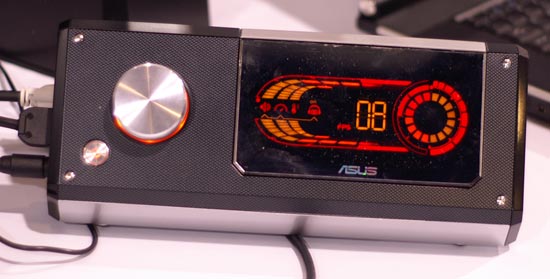

The XG Station is an external housing with a PCIe x16 slot powered by an external AC adapter. The box connects to your notebook via ExpressCard 34, which is effectively a PCIe x1 interface. The XG Station would appear as another video card, and you’d have to use an external monitor with the card, but you get much better performance than integrated graphics.
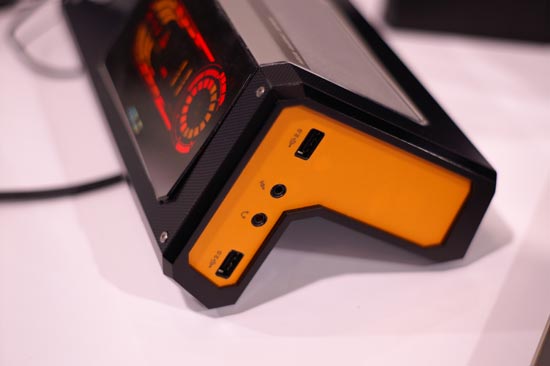
The current XG Station features a GeForce 7900GS, but future models could support higher end offerings.
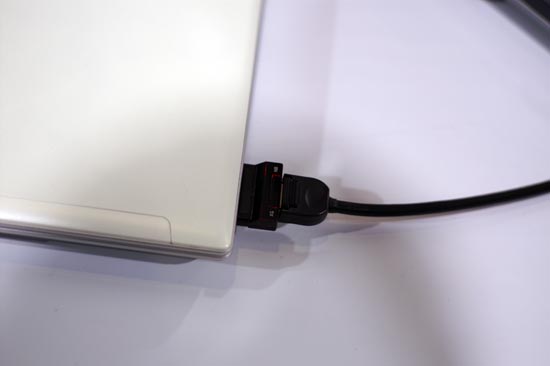
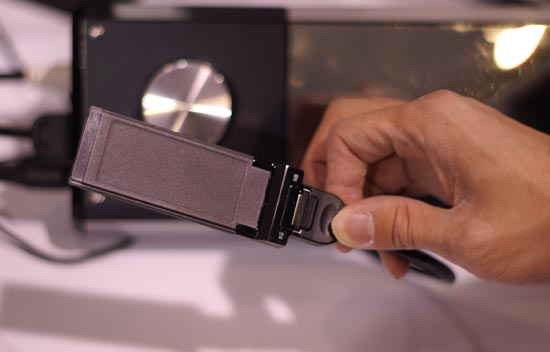
It’s currently the only way to really upgrade notebooks with cheap integrated graphics, unfortunately the XG Station does carry a high price tag - $599 gets you the unit and a 7900 GS.
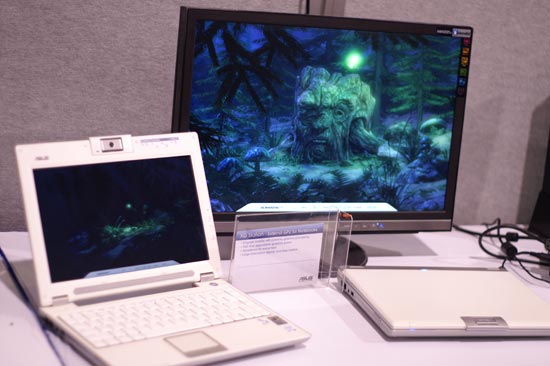
Water Cooled 8800 GTX
NVIDIA is slowly but surely lifting restrictions on its partners selling factory overclocked GeForce 8800 GTXs. ASUS was one of many companies at the show to demonstrate an overclocked 8800 GTX, running at 630MHz core and 2.06GHz memory (up from 575/900MHz).
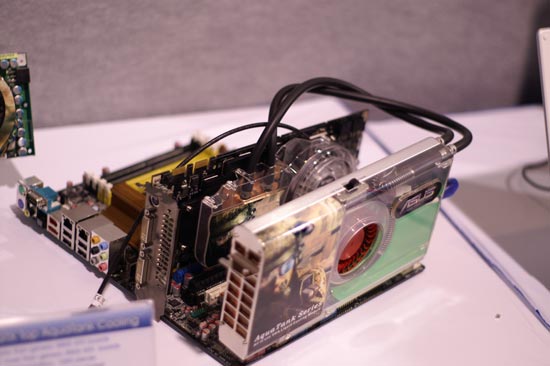
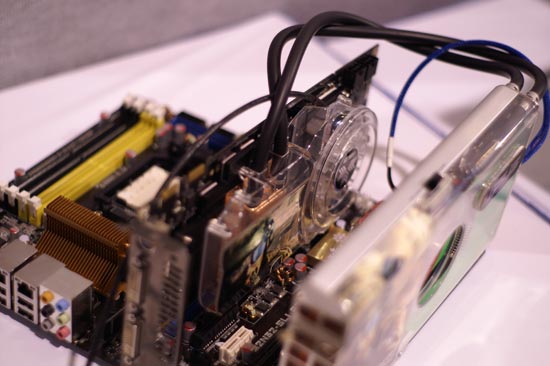
The EN8800 GTX Top AquaTank is water cooled in order to reach higher clock speeds at lower noise levels. Unfortunately both the water reservoir and the card itself both have fans despite the liquid cooling, they just spin at lower speeds.










18 Comments
View All Comments
artifex - Monday, January 15, 2007 - link
I'm getting offers in the ads from companies who claim to offer "free" stuff provided you join a lot of trial offers and buy a bunch of stuff and sucker your friends into joining, also.Does Anandtech approve of these ads? Don't say you have no control over them, because you do. You can complain to your provider, IndustryBrains, or switch if they continue to show these things.
The suckier the ads are, the less credibility you have among people who see them, and the more likely everyone will use adblockers, which will kill your revenue.
artifex - Monday, January 15, 2007 - link
You guys must be too young to remember G-Force, the anime. :)When Nvidia announced their first GeForce product, I thought they might get sued, themselves. But of course, g-force is a term that predates either.
Houdani - Friday, January 12, 2007 - link
<--- that's me being grumpy about Toshiba & Canon not displaying the SED TVs at CES'07 due to legal wranglings with Nano-Proprietary. This, of course, is only pushing out their availability that much farther, further closing the window on this tech. Hrmph!semo - Friday, January 12, 2007 - link
why is that such an issue? what is performance? some numbers you couldn't care less when playing assuming the fps stay above a certain number. you expect performance to drop when enabling other eye candy, but when it comes to realism everyone seems to complain.this makes me think, are ppl buying better video cards for the increased "performance" or for the more immersive experience.
Houdani - Friday, January 12, 2007 - link
Physics doesn't necessarily have to mean that more polygons are pushed to the screen (such as when things go boom). When this happens, then it taxes the video card more and has a subsequent impact on performance. I think this relationship is understood and accepted.However, if the physics don't add more polygons but instead cause objects to interact more realistically then we're at the spot where we don't want overall performance to slow down. This is where Ageia needs to flex their strength and not disappoint their audience.
In *software* we already have the ability to have great physics, but at a loss to performance. For Ageia to excel, they necessarily have to remove that hindrance and give us the physics without the performance hit -- otherwise they've provided us with little or no benefit, really.
semo - Friday, January 12, 2007 - link
that makes sense. how much of a performance hit are talking here anyway. and how much of the physics calculations are outsourced to the ppu (and are there any big overheads as a result)LoneWolf15 - Friday, January 12, 2007 - link
It would be, if you can make sure this product is extremely difficult to damage.
I've seen way too many students that don't care how they treat something a school gives them --after all, it's (in their minds) not like they bought and paid for it with their own money (the concept that their parents' taxes did is irrelevant in their minds in those cases).
I agree that the concept is brilliant on paper, and it should be perfect for higher education. In the K-12 evnironment though, unless there's a way of accountability that works without making parents upset, or a way of making them durable enough that this is not an issue, this could be an idea that falls one tiny step short of a great finish.
bokep - Friday, January 12, 2007 - link
I've been following OLEDs since I first learned about it over half a decade ago. Nice to see it working that well and should be coming out within the next few years.CSMR - Thursday, January 11, 2007 - link
Great reviews, thanks for keeping the world updated!archcommus - Thursday, January 11, 2007 - link
...let's be serious here, LCD is surely getting the job done just fine.